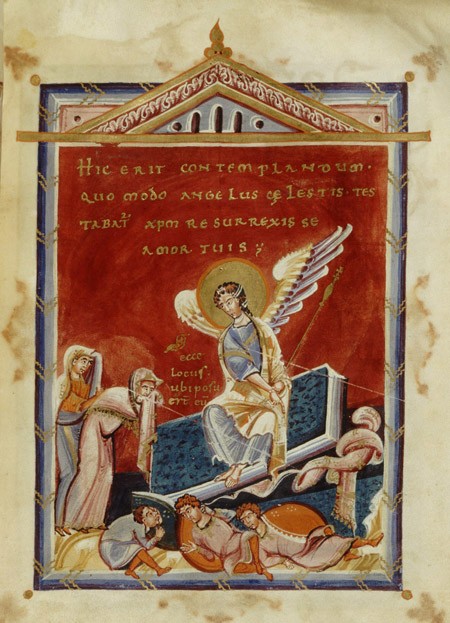Around the year 1000, painters and scribes working in Cologne developed a distinctive approach to the illumination of sacred and liturgical manuscripts that paired full-page miniatures with corresponding tituli—that is, Latin inscriptions composed specifically to accompany an image or an object. The use of such inscriptions in conjunction with works of art draws upon a tradition that reaches back ultimately to the monumental pictorial cycles from the basilicas of Christian antiquity. By the ninth
Most art historians have overlooked these curious texts, focusing their attention instead on the sumptuous illumination of the manuscripts, which is characterized in part by a rich and eclectic style as well as an innovative approach to otherwise standard iconographies. Already at the beginning of the twentieth century, scholars recognized the earliest manuscripts from Cologne—the so-called painterly group from the late tenth and early eleventh centuries—as marking a stylistic high point of the entire school. The distinctive painterliness of these manuscripts results from the fluid, at times frenetic handling of pigment, which lends the miniatures a particularly expressive quality. In probing the roots of this painterly style, art historians have uncovered an array of influences, ranging from the art of the Carolingian past to the highly prized treasures imported from Byzantium, as well as to contemporary developments in important neighboring centers of art such as Trier and Mainz.
My research on the painterly manuscripts of Cologne moves beyond a purely stylistic analysis by considering how their two most salient features—their tituli and the formal qualities of their miniatures—work in tandem to transform the book into a contemplative medium. In writing my dissertation, I focused my efforts on an analysis of the extensive miniature cycles of three nearly contemporary luxury manuscripts from the group: two gospel books and a sacramentary. For two of these manuscripts, preserved today in Milan (Biblioteca Ambrosiana, MS C 53 Sup) and Paris (Bibliothèque
The third manuscript under consideration, the so-called Hitda Codex in Darmstadt (Universitäts-und Landesbibliothek, Hs. 1640), represents, in the scope and complexity of its miniature cycle, the culmination of the painterly group of the Cologne School and marks a milestone in the employment of pictorial narrative in illuminated manuscripts from the Middle Ages. My analysis contributes in two respects to the discussion in the vast scholarly literature on the manuscript. First, by firmly situating this important codex within the context of its less studied sister manuscripts in Paris and Milan, I have been able to uncover previously overlooked points of convergence within the group while casting the innovations of the Hitda Codex into sharper relief. Second, I demonstrate that the tituli of the codex play a crucial role in shaping the complex approach to narrative exhibited by the miniature cycle—an approach that distinguishes the manuscript from the majority of known contemporary pictorial cycles depicting the life of Christ.
Throughout the dissertation I maintain that the inscriptions, by way of both context and syntax, establish a critical discourse with their corresponding miniatures that goes beyond
Members' Research Report Archive
Image and Inscription in the Painterly Manuscripts from Ottonian Cologne
Joshua O'Driscoll [Harvard University]
Paul Mellon Fellow, 2011–2014

Women at the Tomb, c. 1000, Cologne. Bibliothèque nationale de France, MS Latin 817, fol. 59v. Photograph © BnF, Paris